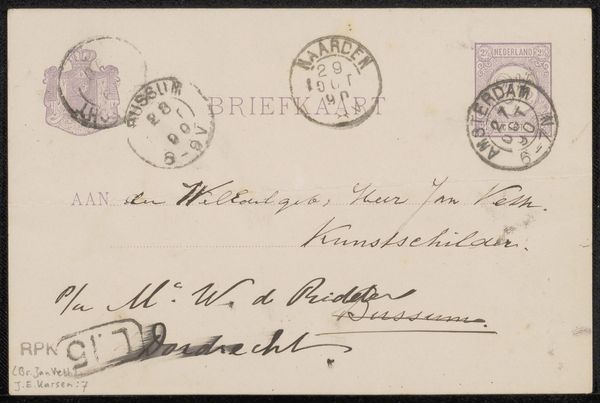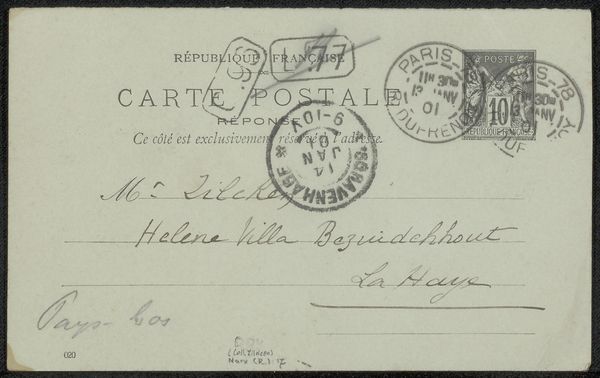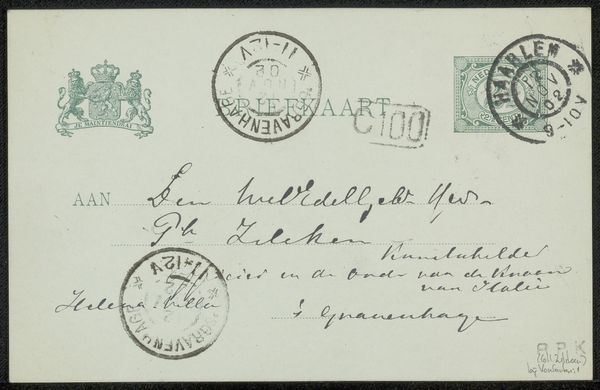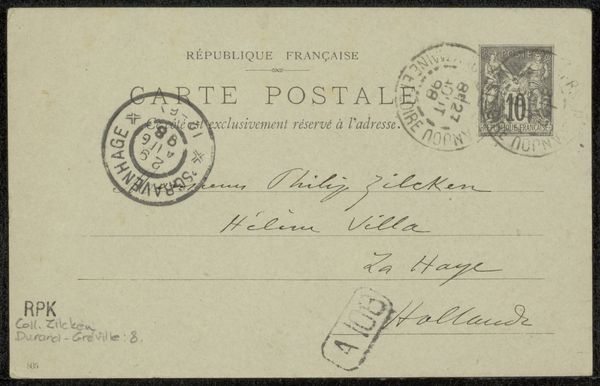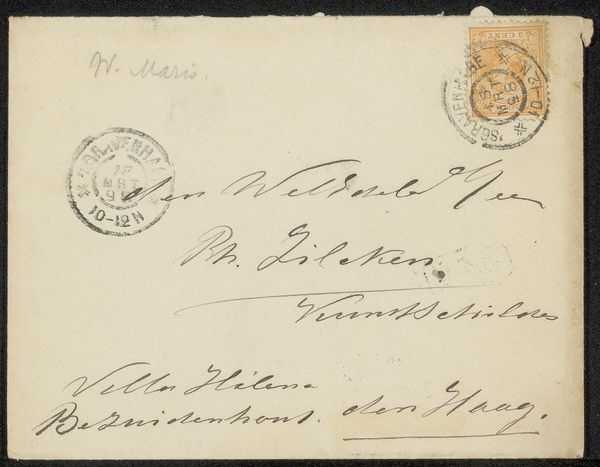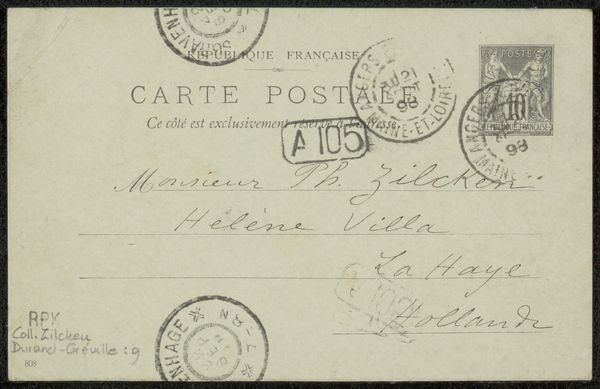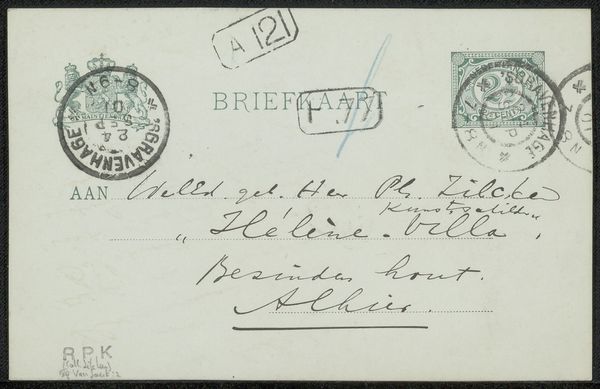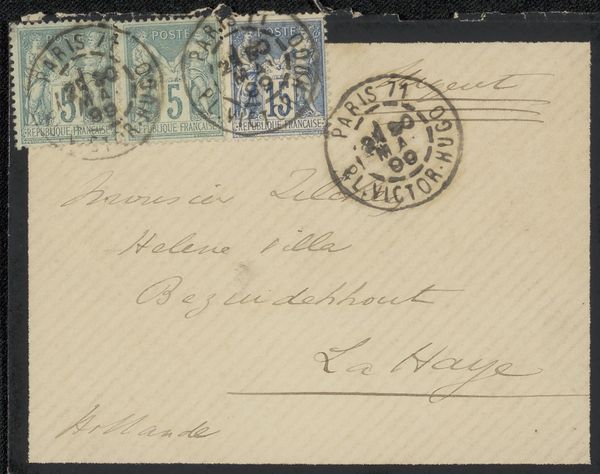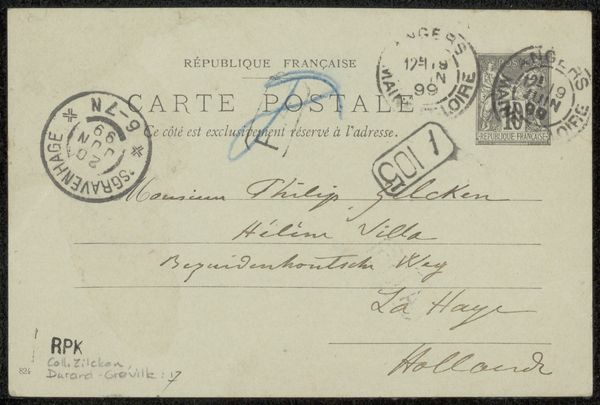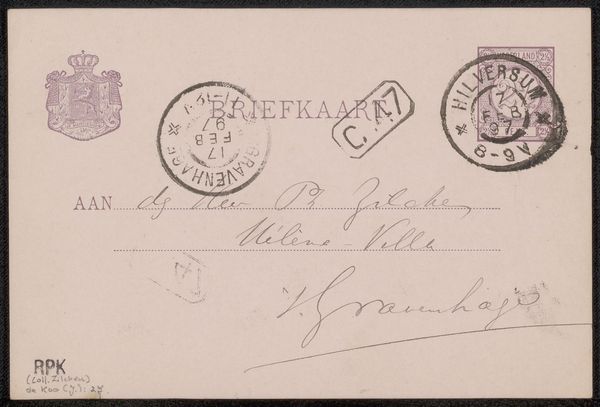
Copyright: Rijks Museum: Open Domain
Curator: Here we have "Briefkaart aan Philip Zilcken," a mixed-media piece, incorporating photography, ink, typography and paper— likely dating back to 1898. It’s potentially a collage element, almost like visual poetry. What strikes you initially? Editor: It feels ghostly, ephemeral. The overlapping stamps and the faded ink create this impression of a message traveling through time, almost lost to it. There’s also something quite intimate about a handwritten note like this – you can almost feel the physical presence of the sender. Curator: The circular stamps really stand out—don’t they? They anchor the piece with their definite shapes. Consider them as mandalas, repeated symbols of journeys or cycles. We have at least three postmarks there: Angers and Maine-et-Loire from November '98, indicating its origin in France. Notice how the script itself carries the visual weight of its time period. Editor: It certainly does. Thinking about the French context of 1898, during the early stages of colonialism, the simple act of sending and receiving this card signifies privilege and the continued entrenchment of imperial infrastructures that were very new at that time. Who was Philip Zilcken to receive this message? A brief note between the Global North elite, preserved now for our speculation, really drives home how selectively history is memorialized and by whom. Curator: The text itself, a flowing, cursive address, creates an immediate visual interest. We see the address in The Hague, so it appears as a transatlantic discourse of its day. The script, very delicate and somewhat obscured in parts, evokes a sense of the personal nature of its transmission and its decay is very beautiful. I read the layered stamps as symbols of authority and authenticity, all contributing to the piece's semiotic depth. Editor: Yes, that interplay of intimacy and bureaucratic processing highlights how personal narratives get interwoven within larger political and economic systems. Curator: For me, it reveals echoes of communication from another century. The physicality of the card bridges the gap between then and now, offering a layered reading experience of time and space. Editor: Absolutely, and it prompts us to consider whose stories remain absent from these preserved fragments of history. A simple card becomes a prompt for deeper questioning.
Comments
No comments
Be the first to comment and join the conversation on the ultimate creative platform.
